We’ve all been there—heading to the mechanic because our car is pulling to one side or the ride just doesn’t feel as smooth anymore, only to find out our tires are wearing out on the outside edges! Why does this happen? More importantly, is there a way to prevent it?
Tire Wear On Outside Edge Of Front Tires
Tire wear on the outside edge of the front tires often caused by under or overinflated tires, improper wheel alignment, worn-out vehicle components like ball joints and springs, and aggressive driving styles such as high-speed turns.
In this article, we’ll explore the common causes of outer edge tire wear, from tire pressure and wheel alignment to the role of vehicle components and driving behavior. We’ll also provide practical strategies to prevent and address this wear, keeping your tires in top-notch condition and your drive smooth and safe.
Let’s take a closer look.
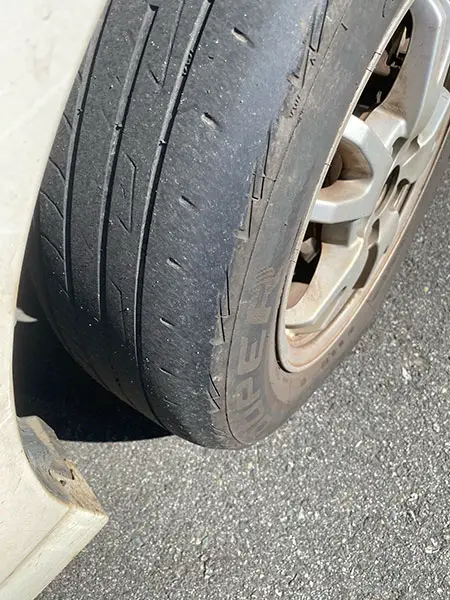
Both Front Tires Wearing On The Outside
Tire wear isn’t always evenly distributed. When you notice both front tires wearing on the outside, it could signal a few potential issues. These might include:
- Aggressive Driving: This includes high-speed turns which put excess pressure on the outer edges of your tires.
- Overinflation: Tires filled beyond their recommended pressure can bulge in the middle, causing the outer edges to wear.
- Misalignment: If your wheels are not aligned properly, particularly with too much toe-in, it could lead to wear on the outside.
Single Tire Wearing On The Outside
On the other hand, if only one tire is wearing on the outside, it can indicate a different set of issues. Some possible reasons include:
- Uneven Tire Pressure: If only one of your tires is over or underinflated, it can result in uneven wear.
- Worn Out Suspension Components: Components like ball joints or sagging springs on one side can cause a tire to tilt and wear unevenly.
- Damage: A single tire could also be wearing out due to physical damage or a manufacturing defect.
Inner Tire Wear Vs Outer Tire Wear
Differentiating between inner tire wear and outer tire wear is crucial in diagnosing the issue correctly. Here are some points to remember:
- Inner Tire Wear: This usually occurs when your wheels are tilted inward at the top, a condition known as ‘negative camber.’ It can also be caused by an over-inflated tire.
- Outer Tire Wear: This happens when the tops of your wheels tilt outward or when the tire is underinflated, causing more contact with the road on the outside edge. It can also occur due to aggressive driving, like taking turns at high speed, which puts extra pressure on the outside edge.
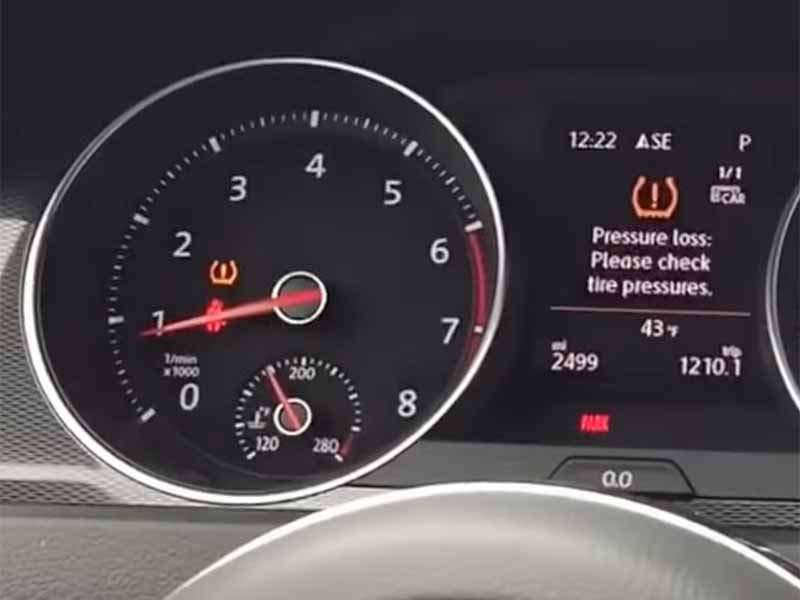
How Tire Pressure Affects Outer Edge Wear
Proper tire pressure doesn’t just affect your ride’s comfort—it’s also vital for the health of your tires. Here’s how tire pressure can influence outer edge tire wear:
- Underinflation: An underinflated tire flattens out and causes more of its outer edges to come into contact with the road. This added friction results in accelerated wear on the outside edges.
- Overinflation: When a tire is overinflated, it bulges out in the middle. While this might seem like it would prevent outer edge wear, remember that an overinflated tire doesn’t absorb shocks well. This can result in faster wear all over, including the outer edges, especially if you’re driving at high speeds or on rough roads.

Maintaining Proper Tire Pressure
Maintaining the correct tire pressure is an easy yet effective way to prevent unnecessary tire wear. Here are a few tips:
- Check Regularly: Tire pressure should be checked at least once a month and before long trips. Remember that tires can lose pressure over time or due to changes in temperature.
- Use a Reliable Tire Pressure Gauge: While many vehicles come with a Tire Pressure Monitoring System (TPMS), a handheld tire pressure gauge can provide a more accurate reading.
- Don’t Forget the Spare: It’s easy to overlook the spare tire, but it too needs the right pressure, just in case!
How Misalignment Contributes to Outer Tire Wear
When it comes to wheel alignment, small changes can have big impacts. For instance, too much “toe-in” – when the fronts of your tires are closer together than the backs – can cause outer edge wear. Here’s why:
- Too Much Toe-In: This condition causes the tires to scrub against the road surface as the vehicle moves forward. Over time, this can cause wear on the outside edges of your front tires.
- Unbalanced Alignment: Even if only one wheel is misaligned, it can lead to uneven wear. The misaligned wheel has to work harder, which causes it to wear out more quickly—often on the outer edge.
Importance of Proper Wheel Alignment
Maintaining proper wheel alignment is crucial for a number of reasons. It:
- Reduces Tire Wear: Correctly aligned wheels ensure your tires wear evenly, extending their lifespan.
- Improves Vehicle Handling: Misalignment can cause your vehicle to pull to one side. A proper alignment helps your vehicle drive straight and true.
- Enhances Fuel Efficiency: When wheels are aligned properly, your vehicle faces less road resistance, which can improve fuel economy.
The Role of Vehicle Components in Tire Wear
Let’s roll onto the next topic – vehicle components. Believe it or not, components like ball joints, springs, and other suspension parts can significantly influence your tire wear. Ready to learn more? Let’s dive in!
Impact of Worn Ball Joints and Sagging Springs
Parts of your vehicle’s suspension system, like ball joints and springs, play a vital role in tire wear. Here’s how:
- Worn Ball Joints: Ball joints act as pivot points between the wheels and the suspension of your vehicle. When they wear out, they can cause your tires to tilt, leading to uneven tire wear, often on the inside or outside edges.
- Sagging Springs: Springs hold up your vehicle’s body. When they begin to sag, it can change your wheel alignment, leading to more wear on the outside of your tires.
Effect of Worn Suspension Components
Suspension components, in general, can significantly affect tire wear patterns. Worn-out shocks or struts can cause your tires to bounce more than usual, causing patches of wear across the tire tread. If your vehicle is riding rough, it might be worth having your suspension checked for any worn parts.
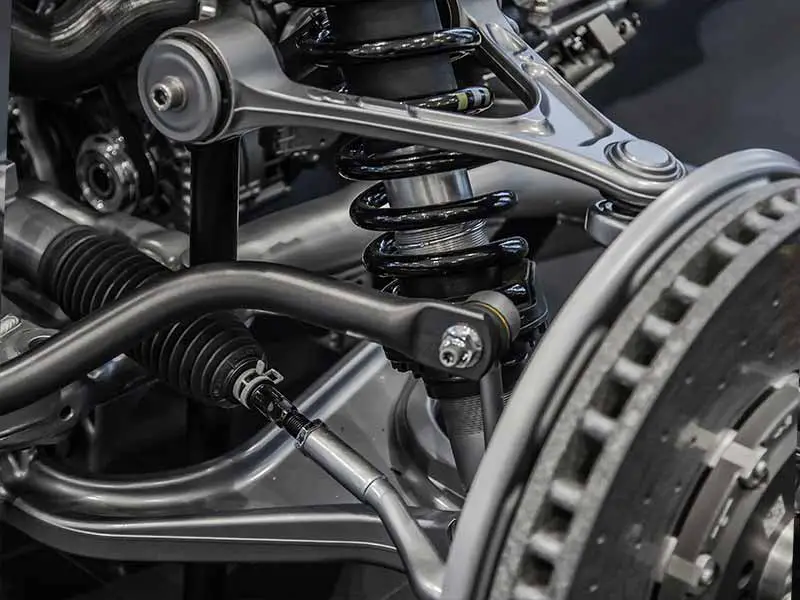
Front Tires Vs Rear Tires
Another factor to consider is the position of the tires on your vehicle. Front tires and rear tires wear differently due to their distinct roles:
- Front Tires: The front tires handle steering and a larger share of braking, causing them to wear more on the outside edges and faster overall.
- Rear Tires: The rear tires mainly follow the front tires, leading to more even wear. However, if you notice your “rear tires wearing” more on the inside or outside edges, it could be a sign of alignment or suspension issues.
Role of Driving Behavior on Tire Wear
Switching gears, let’s discuss driving behavior. You might not realize it, but the way you drive can have a big impact on your tires. Let’s explore how your driving style can influence tire wear, especially on the outside edge.
How Aggressive Driving Accelerates Tire Wear
Fasten your seatbelts for this one! Aggressive driving is a major culprit when it comes to accelerated tire wear. Here’s how:
- High-Speed Turns: When you take turns at high speeds, the weight of your vehicle shifts to one side, putting more pressure on the outer edges of your tires. This can lead to faster wear on these edges.
- Fast Starts and Stops: Hard braking and rapid acceleration can also wear your tires out more quickly, often causing patches of wear across the tire tread.
The Relationship Between Driving Style and Outer Tire Wear
Your driving style and the way you handle your vehicle directly affect the type of wear your tires experience. A more aggressive driving style can lead to more wear on the outside edges of your front tires, especially during high-speed turns. On the other hand, a more conservative driving style, with slow, careful turns and gentle starts and stops, will lead to more even tire wear.
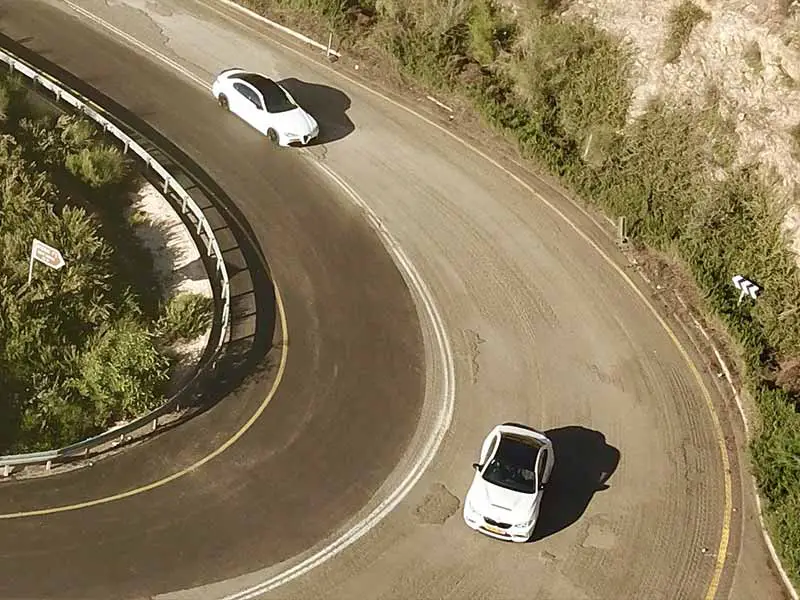
Strategies To Prevent And Fix Outer Tire Wear
Last but not least, let’s talk about strategies to prevent and fix outer tire wear. Now that we’ve explored the various causes of tire wear, it’s time to put that knowledge into action. Let’s learn how to keep your tires in top shape!
Tire Rotation
Regular tire rotation is a key step in preventing uneven tire wear. Here’s why it’s beneficial:
- Even Wear: Because front and rear tires wear differently, rotating them helps even out wear. This can extend the life of your tires.
- Improved Performance: Regularly rotated tires tend to have better traction and handling, which can improve your vehicle’s performance.
Remember, the frequency of tire rotation can depend on your vehicle type, tire type, and how you drive. A good rule of thumb is to rotate your tires every 5,000 to 7,500 miles, but check your vehicle owner’s manual for specific recommendations.
Regular Wheel Alignment Checks
As we’ve learned, misaligned wheels can cause accelerated and uneven tire wear. Regular wheel alignment checks are important to prevent this. Generally, it’s a good idea to have your alignment checked:
- Every 5,000 to 6,000 miles: This is a common recommendation, but again, consult your vehicle owner’s manual.
- If you notice signs of misalignment: These could include your car pulling to one side, uneven tire wear, or your steering wheel being off-center when driving straight.
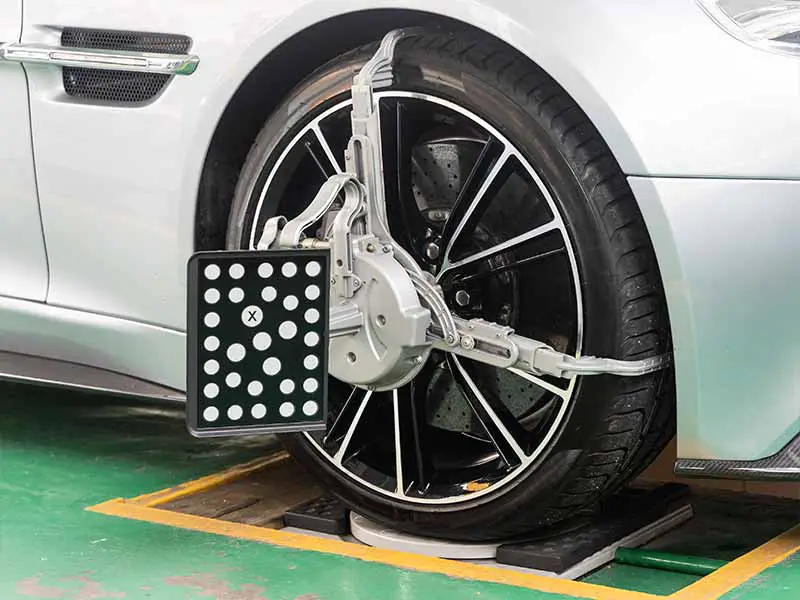
Replacing Worn Suspension Components
Keeping your vehicle’s suspension components in good shape is crucial for preventing uneven tire wear. Here’s what you can do:
- Regular Checks: Have your suspension components checked regularly by a professional, especially if you notice your vehicle riding rough.
- Prompt Replacements: If any parts are worn out, get them replaced promptly. Ignoring a worn-out ball joint or sagging spring can lead to more serious and costly issues down the line.
Adjusting Driving Style
Adjusting your driving style can also help reduce outer tire wear. Here’s how:
- Avoid High-Speed Turns: Slow down before taking turns to reduce the pressure on your tires’ outer edges.
- Smooth Starts and Stops: Avoid rapid acceleration and hard braking to minimize wear and tear on your tires.
Resources
Below are some links you may find helpful when learning about tires
- Tire wear patterns: What can cause uneven tire wear? – Allstate
- Front tires wear on outside edge: Causes and solutions – United Tires
Final Thoughts
From maintaining the right tire pressure and proper wheel alignment, to monitoring the condition of your vehicle’s components like ball joints and springs, each plays a key role in determining how your tires wear.
But don’t forget your part as the driver! Remember that aggressive driving, such as taking turns at high speeds, can lead to accelerated outer tire wear. Regular tire rotations, wheel alignment checks, and prompt replacement of worn vehicle components are effective strategies to prevent and fix outer edge tire wear.
Good luck and happy motoring.





